#peter toohey
Explore tagged Tumblr posts
Text
wondering abt if snow’s motivation in tbosas and afterwards derives from maintaining and crafting a personal image or if it’s a mixture of genuinely trying to repair the capitol to what it once was. I wonder if he ever truly cares about the welfare of the capitol citizens, or if he just cares about his reputation as a leader more than he cares abt the people he’s over.
Does he see the capitol as a direct mirror, where the better it looks, the better he does, or as an aggrandizing projection of his image? Does he care about the people, or does he always just care about the reputation of the snow name?
#been reading ayn rand recently#the fountainhead#well rereading the fountainhead#and#niccolo machiavelli#the prince#too#i see snow in peter keating#maybe even toohey too#idk im gonna reread soon#and hopefully ill have an essay about motivations#the hunger games#sunrise on the reaping#thg#catching fire#haymitch abernathy#peeta mellark#mockingjay#katniss everdeen#president snow#coriolanus snow#thg meta#sotr#tbosas#ballad of songbirds and snakes#the ballad of songbirds and snakes
28 notes
·
View notes
Text
JSTOR Wrapped: top ten JSTOR articles of 2023
Coo, Lyndsay. “A Tale of Two Sisters: Studies in Sophocles’ Tereus.” Transactions of the American Philological Association 143, no. 2 (2013): 349–84.
Finglass, P. J. “A New Fragment of Sophocles’ ‘Tereus.’” Zeitschrift Für Papyrologie Und Epigraphik 200 (2016): 61–85.
Foxhall, Lin. “Pandora Unbound: A Feminist Critique of Foucault’s History of Sexuality.” In Sex and Difference in Ancient Greece and Rome, edited by Mark Golden and Peter Toohey, 167–82. Edinburgh University Press, 2003.
Garrison, Elise P. “Eurydice’s Final Exit to Suicide in the ‘Antigone.’” The Classical World 82, no. 6 (1989): 431–35.
Grethlein, Jonas. “Eine Anthropologie Des Essens: Der Essensstreit in Der ‘Ilias’ Und Die Erntemetapher in Il. 19, 221-224.” Hermes 133, no. 3 (2005): 257–79.
McClure, Laura. “Tokens of Identity: Gender and Recognition in Greek Tragedy.” Illinois Classical Studies 40, no. 2 (2015): 219–36.
Purves, Alex C. “Wind and Time in Homeric Epic.” Transactions of the American Philological Association 140, no. 2 (2010): 323–50.
Richlin, Amy. “Gender and Rhetoric: Producing Manhood in the Schools.” In Sex and Difference in Ancient Greece and Rome, edited by Mark Golden and Peter Toohey, 202–20. Edinburgh University Press, 2003.
Rood, Naomi. “Four Silences in Sophocles’ ‘Trachiniae.’” Arethusa 43, no. 3 (2010): 345–64.
Zeitlin, Froma I. “The Dynamics of Misogyny: Myth and Mythmaking in the Oresteia.” Arethusa 11, no. 1/2 (1978): 149–84.
#alphabetical order. im not ranking them#i still have two more froma zeitlin essays to read (one new and one a reread) in the next few days though#and its possible one of those might knock amy richlin off the rest (nothing personal; its a great piece just not my area)#but if im willing to have two things by the same scholar i would have to rethink including grethlein 'the poetics of the bath in the iliad'#some of my favorite articles/book chapters of the year are not on jstor though...#bill beck 'lost in the middle: story time and discourse time in the iliad'!!!#and lyndsay coo has a 2020 chapter updating and expanding this 2013 article that is 🔥🔥🔥#and of course judith mossman 'women's voices in sophocles' which is what send me to garrison 1989 and rood 2010 but is not itself on jstor#i also reread some of melissa mueller's objects as actors book which is wonderful as always#and i would be incredibly tempted to put william m calder iii's tereus article on a top ten list for sheer entertainment value#jstor wrapped#mine
503 notes
·
View notes
Text
i was tagged by @fracturescope to list some books that i’ve been meaning to read (thanks for thinking of me ♥️♥️♥️)
library books that i have out and need to read soon:
the girl in the tower by katherine arden (starting today!!!!! now that i’ve Finally finished the blade itself by joe abercrombie)
these burning stars by bethany jacobs
a conspiracy of kings by megan whalen turner
vampires of el norte by isabel cañas
the hunger by alma katsu
brokeback mountain by annie proulx
the tough guide to fantasyland by diana wynne jones
the ragpicker king by cassandra clare
boredom: a lively history by peter toohey
a beautiful disaster by jamie mcguire (sounds so stupid that i just have to read it)
polysecure by jessica fern
my most anticipated library holds:
the traitor baru cormorant by seth dickinson
ancillary justice by ann leckie
beneath the trees where nobody sees by patrick horvath
assassin’s apprentice by robin hobb
sunburn by chloe michelle howarth
conclave by robert harris
the dispossessed by ursula le guin
metal from heaven by h. a. clarke
leviathan wakes by james s. a. corey
children of dune by frank herbert
the name of the rose by umberto eco
tagging: @strangewife @hunybody @fruitcompote @clytemnestraaa @officialkendallroy @bloodyfemme @srdcovka and anyone else!! i tried to think of everyone i’ve talked books with …
#please tell me if you’ve read any of these 🙏🙏🙏#books#also everyone add me on storygraph if you’ve haven’t i love lurking on people’s tbrs#it’s on my pinned post
13 notes
·
View notes
Text
By the time I'm posting this, it will be January 26th, commonly known as Australia Day where I'm from. A country known for its sweeping plains, unique fauna and the PM fucking off during a nationwide crisis.
I think, despite all Australia's long-standing issues, there are some things about it worth celebrating the culture. Specifically, the music!
Here are some of (what I think) to be some of the most quintessential Australian albums to listen to:
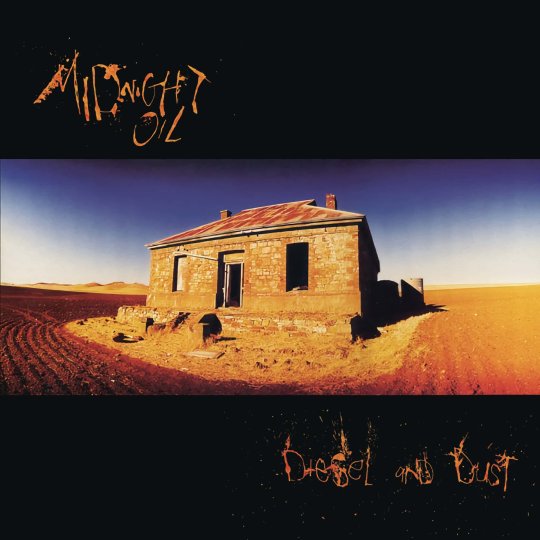
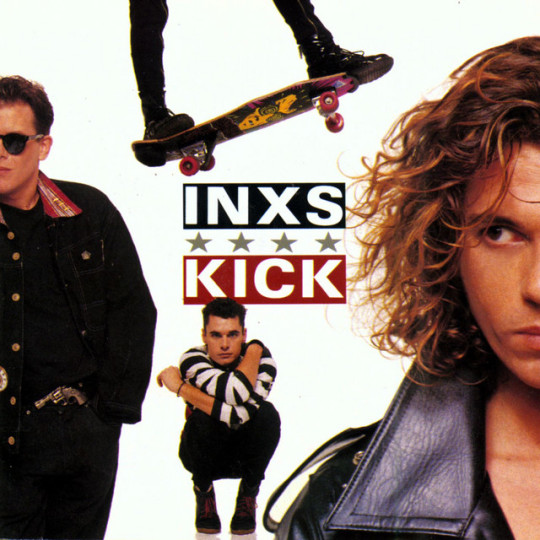
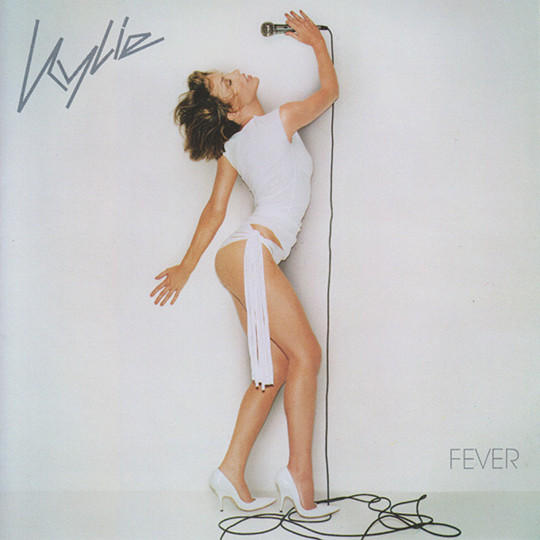
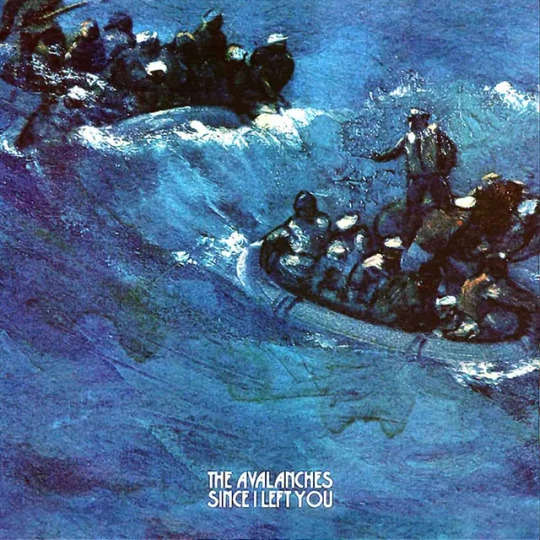

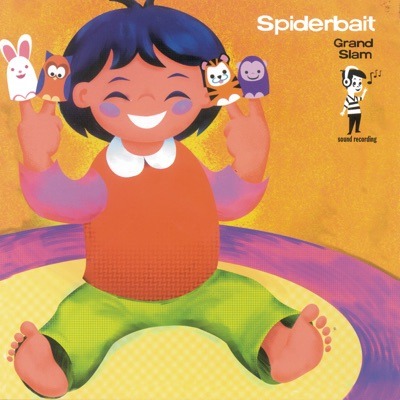

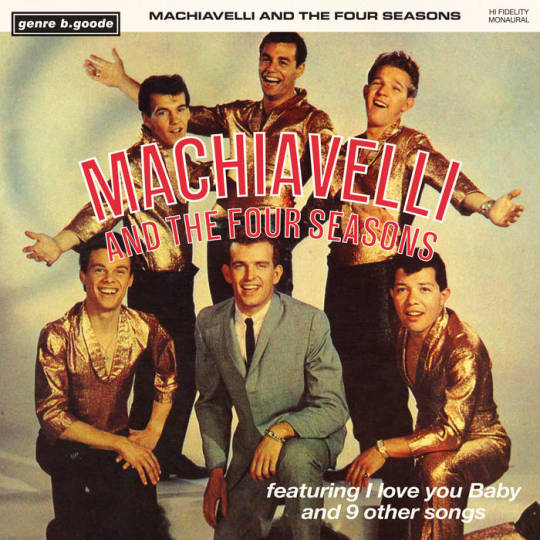

Midnight Oil - Diesel and Dust (1987): Quite possibly the most Aussie album from quite possibly the most Aussie band. The biggest song off of this album, Beds are Burning, is about Aboriginal Australians being forcibly removed from their land, and the lead singer Peter Garrett is really outspoken about justice towards Australia's native peoples, even being in Parliament at one point. Listen if you want to hear what Rage Against the Machine would be like if they were a new wave band and regularly consumed Oak chocolate milk.
INXS - Kick (1987): If the UK had new wave, Australia had pub rock. Artists defined by their songs being so infectious you can remember while you're smashed on seven bottles of Tooheys Extra Dry (kidding. it's called pub rock because that's where they'd play their sets. in pubs). INXS is quite possibly the pub rock band, the genuine article, and this album is a nice gateway into their music; Punchy, upbeat, and memorable riffs for days. (Songs like Need You Tonight and New Sensation for a good idea). Listen if you like Duran Duran or The Cars.
Kylie Minogue - Fever (2001): GOD, how do I introduce Kylie. This country's shining grace. The superstar in our backyard. Our very own Princess of Pop. This album just extrudes that gleam and optimism that'd you find in a lot of Y2K dance-pop music, and I absolutely love it. Listen if you like Discovery-era Daft Punk or Grace Jones.
The Avalanches - Since I Left You (2000): My personal favourite off this list. It might not be the most "Aussie", but I think it makes up for it in its ethereal tone and sampling techniques. One song might just be made up of just one sample, while another might be made up of 50, (Frontier Psychiatrist was originally made up of 28 samples), but it's all tied together by this collective lofi sound. Listen if you like DJ Shadow, Portishead, or The Chemical Brothers.
Regurgitator - Unit (1997): There was this period in the 90's where Australian alt-rock went fucking berzerk, and Regurgitator was one of those bands. Everyday Formula opens with "Everyday I shit into the sea" and ! (Song Formerly Known As) is about not going out to parties and staying at home. Listen if you'd like Gary Numan mixed with the subject matter of early Weezer.
Spiderbait - Grand Slam (1999): Spiderbait was another one of the alt-rock outlets that got really popular despite being really vocal about the hypocrisy of the industry at large. This album contains a wide variety of influences, like 60's bubblegum on Glockenpop (song about the needless commodification of music. their most popular song and highest-earning single of that year. lol), pop punk on Dinner Time and hard rock on Shazam! A pretty good all-rounder made brilliant by vocalist Kram. Listen if you like Green Day or No Doubt.
Empire of the Sun - Walking on a Dream (2008): I put this one on because the cover is really funny, but then I listened to the album and I got a sense of bittersweet nostalgia listening to it. A mix of disco, dance-rock and funk (We Are The People is a good example) make for something that made me wish I was 7 again. Listen if you like Prince or Let's Dance-era Bowie.
TISM - Machiavelli and the Four Seasons (1995): TISM (short for This Is Serious Mum) are a fucking disgrace to this country. They are such a bunch of yobbo cunts that I can't believe they managed to get anywhere past 90 on the charts. Wankers like them deserve to be dragged out on stage and beat to a pulp viciously, to the ravenous delight of the crowd. Don't listen to this album and don't listen to Greg! The Stop Sign!! Listen if you're a masochist, maybe.
AC/DC - Let There Be Rock (1977): Ah yes, good ol Acca. The ultimate dad band. You could put any of their albums on this list because they all sound the exact same, but I put this one on because I prefer Bon Scott's vocals. The title track feels like it goes forever, but in a way where you wish it didn't end. Some nice fashioned high voltage rock'n'roll. Listen if you like Black Sabbath.
There are way more that I could have put on here (Gurrumul, Frenzal Rhomb, Powderfinger, Silverchair, The Presets, The Chats, Men At Work, Tame Impala etc.) but I think you could probably discover them in your own time. In the meantime, here is the very culmination of Australian music. Nearly 50 years has led up to this being made.
Fuckin skitz cunt.
#australia#australian music#midnight oil#inxs#kylie minogue#the avalanches#regurgitator#tism#ac/dc#the best piece of australian art is democracy manifest#just so u know#music#gecko boy#SoundCloud
48 notes
·
View notes
Text
Birthdays 3.18
Beer Birthdays
John Smith (1824)
William Ebling (1828)
James Toohey (1850)
Jason Chavez (1968)
Alexandra Nowell (1985)
Five Favorite Birthdays
Luc Besson; film director, writer (1959)
Will Durst; comedian (1952)
Edward Everett Horton; actor, narrator (1886)
Nikolai Rimsky-Korsakov; composer (1844)
John Updike; writer (1932)
Famous Birthdays
Bonnie Blair; speed skater (1964)
Irene Cara; pop singer (1959)
Edgar Cayce; psychic (1877)
Neville Chamberlain; British PM (1869)
Grover Cleveland; 22nd & 24th U.S. President (1837)
Richard Condon; writer (1915)
Dane Cook; comedian (1972)
Frederik Willem de Klerk; South African politician (1936)
Robert Donat; actor (1905)
Joy Fielding; writer (1945)
Bill Frisell; jazz musician (1951)
Jim Funk; pop singer, songwriter (1969)
Ernest Gallo; winemaker (1909)
Peter Graves; actor (1926)
Manly Hall; writer (1901)
William H. Johnson; artist (1901)
Queen Latifah; musician, actor (1970)
Stéphane Mallarmé; French poet (1842)
James McMurtry; rock guitarist, singer, actor (1962)
Wilson Pickett; pop singer (1941)
Pillsbury Dough Boy; advertising character (1965)
George Plimpton; actor, writer (1901)
Charley Pride; country singer (1938)
Raphael; artist (1483)
Michael Rapaport; actor (1970)
Joseph Schmitt; composer (1734)
Vanessa Williams; pop singer, actor (1963)
Kai Winding; jazz trombonist (1929)
2 notes
·
View notes
Text
無聊,無益之事及有涯之生
H:無聊結果:「想要做些什麼,卻又不知道想做什麼事?」做了什麼,卻被人說是「無用或無益」。有用是什麽?小時讀雜書稱為「無路用」,不能幫助成績及升學。有工作時跑去進修,卻與工作專業無關,白忙一場。杜甫「名豈文章著,官應老病休。飄飄何所似?天地一沙鷗。」
譯「我難道是因為文章而著名嗎?年老病多也應該休官了。」項鴻祚:「不做無益之事,何以遣有涯之生。」無益之事指的填詞吟詩的消遣。前人如是雅興,今人只能寫FB及X或blog。世上成材者少,成就虛名者多。無聊之作,所以成名。正經說道理反而無人問。天下道理在於趣,投緣。無聊時看看,凡事莫當真。20250427W7
項鴻祚
項鴻祚(1798~1835)清代詞人。原名繼章,後改名廷紀,字蓮生。錢塘(今浙江杭州)人。道光十二年(1832)舉人,兩應進士試不第,窮愁而卒,年僅三十八歲。家世業鹽筴,鉅富,至君漸落。鴻祚一生,大似納蘭性德。他與龔自珍同時爲“西湖雙傑”。其詞多表現抑鬱、感傷之情,著有《憶雲詞甲乙丙丁稿》4卷,《補遺》1卷,有光緒癸巳錢塘榆園叢刻本。
旅夜書懷
詩名。唐杜甫所作。五言律詩。全詩為:「細草���風岸,危檣獨夜舟。星垂平野闊,月湧大江流。名豈文章著,官應老病休。飄飄何所似?天地一沙鷗。」
雅興
風雅的興致。唐.權德輿〈韋賓客宅與諸博士宴集〉詩:「簪組歡言久,琴壺雅興長。」《初刻拍案驚奇》卷三○:「且其人善能詼諧談笑,廣曉技藝,或者可以賜他侍坐,以助副大使雅興萬一。」
博客來
無聊心理學:我們為何無聊?無聊不好嗎?無聊時我們可以做些什麼?
Out of My Skull:The Psychology of Boredom
2025/04/28
作者詹姆斯.丹克特 , 約翰.伊斯特伍德
原文作者James Danckert,John D. Eastwood
譯者袁銘鈺
語言繁體中文
出版社橡實文化
出版日期2022/08/01
內容簡介
沒有人喜歡無聊,但它卻無所不在,
無聊會不會是在傳達什麼訊息呢?
無聊等同於沮喪或冷漠嗎?從人類、動物到機器人都會感到無聊嗎?
哪種人更容易感到無聊?又是哪種環境最會讓人覺得無聊呢?
衝動行為、藥物濫用、成癮、賭博、飲食問題、憂鬱,全都是無聊造成的?
無聊有助於創造力和學習?心流、興趣和好奇心是擺脫無聊的妙方?
本書將解開無聊的種種謎團!
◎心智空閒+欲望難題=無聊來襲
當我們感到無聊時,時間變得漫長,手上做的事變得沒有意義,
我們難以集中注意力,感到無精打采又焦躁不安,
想要做些什麼,卻又不知道想做什麼事……
到底要怎樣才能擺脫這種困境呢?
玩電動遊戲消消樂、瀏覽社群網站的貼文、觀看串流平臺的節目……
當代社會充滿了快速易得的暫緩無聊的東西。
但是,我們對這些解脫方法的依戀,
是否讓無聊成為一個更緊迫的問題?
◎無聊有什麼用?
本書的兩位作者從心理學觀點出發,從歷史、文學及科學層面解剖「無聊」這種模糊的感覺,並以眾多實驗研究成果,來分析導致無聊的外部和內部因素、什麼樣的人更容易感到無聊,以及無聊這種感覺存在的意義、它所帶來的信號,並提示讀者該如何應對無聊,進而積極投入參與有意義的行動,活出自主且精采的人生。
無聊是一種想要卻無法參與令人滿足的活動,所導致的不適感。當我們想要投入心力卻無法做到時,那種心智空閒的感覺就是無聊。無聊不是好事,也不是壞事,我們對無聊信號的反應,才決定了最終的結果。無聊是對行動的召喚,提醒我們需要更加投入,將我們推向有意義的、令人滿足的行動。它迫使你問出那個重要的問題:「我該怎麼辦?」無聊點燃了我們重建意義的渴望,而最後會導致積極的行動或結果(懷舊的遐想、慈善的大手筆),還是推向破壞性的追求(極端的政治觀點、對他人的攻擊),則取決於我們自己。
好評推薦
本書提供了重要的洞察力。讀者將對什麼是無聊,以及我們可以用它做什麼,有更深入的了解。最重要的是,它解釋了為什麼我們不應該抵抗無聊,而應該傾聽。──艾里克.科泰萊薩(Eric Cortellessa),華盛頓月刊(Washington Monthly)
無聊幾乎困擾著每個人,但誰願意承認這一點?振作起來:本書作者展示了無聊雖然令人不快,卻能促使我們採取富有成效的行動。這本書可能會讓你對這種非常人性化的失敗感覺更好。我知道它對我有用。──彼得.圖希(Peter Toohey),著有《無聊:一部生動的歷史》(Boredom: A Lively History)的作者
本書是對無聊本質的啟發,包括是什麼導致了它、我們如何處理它,以及它如何影響我們的生活。丹克特和伊斯特伍德探討了這個時代最緊迫的一些問題,包括單獨監禁、犯罪、網絡成癮和戰爭,讓我們去思考無聊說了關於世界和自己的什麼事。──希瑟.蘭奇(Heather Lench),編有《情緒的功能:情緒何時以及為何幫助我們》(The Function of Emotions: When and Why Emotions Help Us)
這是一本引人入勝的書……針對無聊這種感覺和動機、痛苦和生活意義���來源、社會病態和技術困境,進行了延伸思考……這是一本有趣而有啟發性的讀物,巧妙而深入地探索了無聊的許多方面。──尼克.哈斯拉姆,《內幕》(Inside Story)
收回
目錄
序言
第1章 無聊的別名
無聊的簡史
存在主義式的困境
沙發上的無聊
動物也會感到無聊?
大腦對無聊的反應
古老體驗的現代定義
第2章 「剛剛好」原則
無聊四騎士
引起無聊的內在因素
條條大路通無聊
第3章 無聊是改變的動力
無聊與意圖
人工智慧機器人與無聊感受
第4章 人生各階段的無聊程度
「我覺得好無聊!」
無聊的漲潮期
我是個成年人了
中年,中等無聊?
晚年的無聊
第5章 無聊的間接後果
無聊與不良行為
無聊與憂鬱
無聊與創造力
第6章 極端環境中的無聊
極端環境
被監禁的時光
兩種截然不同的太空經驗
第7章 無聊與人生意義
失去意義
尋找意義
創造意義
不確定的意義
第8章 正在形成的無聊流行病
在雜訊中分類信號
互聯網的誘惑
無連結的連接
孤獨之心俱樂部
第9章 順著心流而行
何謂心流
心流之外的興趣與好奇心
悠閒但不無聊
結語
註釋
致謝
圖片版權
參考文獻
索引
收回
序
序言
換駕照那天,你一大早就到了監理所,以為這樣就不會遇到人滿為患的情況,但卻沒那麼幸運,大家的想法好像都跟你一樣,室內已經擠滿人了。你一走向櫃檯,就被告知:「請領取號碼牌並耐心等待。」
你拖著腳步走到最靠近的那把椅子,坐在那裡煩躁地扭來扭去,晃個不停。你抬起頭東張西望,想找點樂子,但你已經看過這裡的每一張海報,仔細閱讀了從新手駕駛到起重機司機需要知道的每一條規則,你癱坐著,用手支著頭。叫號的速度很慢。你的倦意一陣陣湧上來,偶爾還有些怒意。你無精打采,卻又焦躁無比,於是你又看起了海報,第二遍。隨著時間緩慢流逝,想要行動的急切感越發強烈。
突然間,你想起了手機。你興奮地摸索著口袋,希望可以從此獲得解脫。你戴上耳機,打開手機,身體瞬間感到舒緩,思路頓時清晰,整個人平靜了下來。危機已經解除了?也許吧。你擺脫了一種相當不愉悅的感受,這是件好事,但是,無聊會不會是在向你傳達什麼訊息呢?
******
當我們看不到前進的方向,當我們想要做點什麼,但又不想去做手上應該做的事情時,無聊就會找上門。我們可以說這是一種無精打采或萎靡不振的感覺,或與此相反,是一種「坐立難安」的感覺,焦躁地想做一件事,卻不知道該做什麼。雖然無聊有各種表現方式,但我們都曾體驗過它。我們認為,人們應該注意到它並理解它。在我們看來,無聊的狀態很讓人著迷,說不定還有一些好處。
數年來,無數的哲學家、歷史學家和神學家都探討過「無聊」這一課題。然而,儘管無聊無所不在,但迄今為止,它在科學領域得到的關注相對較少。本書試圖改變這一趨勢。心理學是一門研究心理與行為的學科,可以為研究「無聊」這個人類經驗提供思路。身為心理學家,我們的專業領域涵蓋神經科學和臨床心理學,在過去十五年裡,我們持續發表了有關「無聊」的研究成果,並對無聊做出了一套解釋,強調兩個關鍵的概念,即「投入參與」(engagement)和「行動力」(agency)。我們結合了多種方法來研究「無聊」,因此能夠解釋眾多不同的科學研究發現。
雖然我們確信無聊對你而言意味著某種訊息,卻不會貿然告訴你應該如何生活。無聊本身也不能告訴你該怎麼做。在某種意義上,你只能靠自己。這正是無聊帶來的關鍵訊息之一,進一步來說,這也是本書的核心主題。身為人類,我們需要與世界建立自主且有效的連結。
我們需要投入,需要運用心智,表達自己的欲望,並將技能和天賦付諸實踐。簡言之,我們需要行動。若這個需求被滿足了,我們就會神采煥發。若這個需求受阻,我們就會感到無聊,感到無所事事。
在這一點上,無聊揭示了人之為人的一個重要面向:我們有一種強烈的需要,想要跟周遭的世界建立密切的連結。正如我們將看到的,有許多東西可以替代真正的投入參與,它們可能很誘人,甚至可能在短期內擊退無聊。但是,這種短暫的安慰從不長久,無聊會捲土重來。之後,要不要擁抱行動力,就看我們自己了。
無聊是個難以把握的課題,它的觸角伸展到人類研究的廣泛領域。在某種程度上,正是這一點使它如此令人著迷,但也是這一點讓它如此折磨人。在路易斯.卡羅(Lewis Carroll)的《愛麗絲鏡中���遇》(Through the Looking-Glass)一書中,矮胖子和愛麗絲之間曾有一段對話。矮胖子「輕蔑地」斷言道:
「我用一個詞的時候,它的意思只代表我想要的那個意思,不多也不少。」愛麗絲言之有理地回覆:「問題是你怎麼能造出一些詞,它們各可以包含許多不同的意思呢?」
愛麗絲和矮胖子的溝通失敗,正是如今許多無聊相關研究的象徵。雖然我們認為,關於無聊並不存在正確或不正確的定義,但的確需要有更準確的定義。在本書中,我們致力於運用心理學方法來界定這個難以捉摸的主題,因為我們認為無聊是一種心智層面的經驗。我們還試圖為這個分散破碎的領域,提供一個組織框架,希望它能成為廣大讀者和學者討論交流的共同出發點。
我們以這個問題展開旅程:「什麼是無聊?」大多數人都覺得自己很瞭解無聊這種最日常的體驗,但要為「無聊」下定義,那可就難了。我們探索得越深入,無聊就越是神祕有趣。接下來,我們會問另一個問題:「無聊的好處是什麼?」為什麼進化的力量將我們塑造成了會被這種負面體驗所影響的生物?我們將會看到,「感到無聊」是一種能力,而這種能力其實是有益的。當無聊來襲時,我們不必害怕。關鍵在於,如何應對無聊。
接著,我們關注下一個問題:「是什麼讓我們覺得無聊?」答案並不簡單。無聊,就像美一樣,在不同人的眼中是完全不一樣的。讓甲感到歡愉的事,可能對乙來說無聊透頂。然而,有一些關鍵因素存在於我們自身及所處的環境中,這些因素增加了我們被無聊壓垮的風險。接下來,我們研究無聊是如何發揮影響,進而使我們切斷與他人的聯繫,也脫離了創造意義和找尋目的的根本需求。然後,我們仔細思考無聊的反面是什麼,以加深對這種體驗的理解,並找到應對無聊的最佳策略。
無聊是對行動的召喚,它是一個信號,提醒我們需要更加投入參與。它將我們推向有意義的、令人滿足的行動,迫使你問出那個重要的問題:「我該做什麼?」本書並不是要回答這個問題。這是一部指南,幫助你更透徹地理解無聊的含義。
收回
作者介紹
作者簡介
詹姆斯.丹克特(James Danckert)
心理學家,加拿大滑鐵盧大學(University of Waterloo)心理學系教授。曾獲選加拿大認知神經科學首席科學家、加拿大滑鐵盧地區「四十歲以下四十人」。在大學攻讀臨床神經心理學時,丹克特觀察到,自己的兄長在發生車禍導致腦損傷後,變得更容易感到無聊,激發了他對無聊的研究興趣。此後,他創辦了丹克特實驗室,專門研究無聊及心智模型,在認知神經科學領域有重大突破
0 notes
Text
The gay scandal QLD Police hushed up for over a century
New Post has been published on https://qnews.com.au/the-gay-scandal-qld-police-hushed-up-for-over-a-century/
The gay scandal QLD Police hushed up for over a century

In 1906, the Queensland Police hushed up the greatest gay scandal in the state’s history. The cover-up endured for over a century.
Aboriginal and Torres Strait Islander readers are advised that the following story contains the name of a person who has died.
This writer uncovered the cover-up while researching the brutal murder of 67-year-old Peter Lumberg in Cairns in 1905. Despite oodles of evidence pointing to the guilt of the old man’s ‘most intimate friend’ – an obvious psychopath – the murder was never solved.
In fact, Inspector Hubert Durham, officer-in-charge of the far north police district, did everything possible to ensure the psychopath escaped justice. That included using torture to force a confession from an Aboriginal man named Tommy Tomahawk.
Evidence presented to an inquiry also showed that the psychopath previously attempted to kill both his own wife and Peter Lumberg by poisoning. His 54-year-old father-in-law died unexpectedly earlier in 1905; both his children died in infancy, and his wife simply disappeared a few years later. Her husband told the local paper she died in a New York hospital despite her not having the means to travel to the United States and no record of her travel, hospital stay or death.
So why would Inspector Durham risk everything to protect a homicidal maniac?
To me, the obvious answer always seemed blackmail. The psychopath had something on him.
Gay sex remained illegal in 1905. Durham’s life would have been ruined by accusations of gay sex. He already picked up and started again on the other side of the world as a young man. An officer in a British regiment, young Durham suddenly resigned and moved to Queensland, cutting off contact with his parents for the remainder of his life.
Legendary sportsman
Tall, athletic and good-looking, Hubert Durham became a legendary Queensland sportsman. He was a leading player on the Queensland rugby team that first won an inter-colonial match against NSW in 1886. A decade later as Treasurer of Queensland Rugby, he was instrumental in introducing maroon as the team colour.
Durham also achieved many newsworthy successes during his police career. However, suspicion of some nature always hung over him. He spoke in his suicide note of ‘vile wretches’ starting ‘atrocious rumours’ about him.
“I never was able to locate the beginning of that calumny. But the herd loves to sniff prurience of that sort, and therefore, I have never professed to be perturbed by the damnable slanders…”
After a public outcry about the mismanaged prosecution of Tommy Tomahawk, Commissioner Cahill ordered his Mr Fix-it Inspector Toohey to Cairns. The pair communicated by coded telegram as they worked to minimise damage to the police force. Toohey stage-managed a public inquiry designed to share with the public no more information than they already knew. Other highly incriminating evidence remained shrouded in secrecy.
A few cops suffered minor punishments. Durham was demoted and transferred to Hughenden – a hot and dusty hellhole where he’d hopefully never be heard of again.
Charlie Cocks
But in Hughenden, Durham did something he’d obviously done many times before. He connived to get a junior officer naked, then forcibly restrained the young man and performed oral sex on him. He also offered to put his penis in the constable’s arse but accepted that could wait until ‘some other time’ when Charlie Cocks refused.
Charlie Cocks was not intimidated by anyone. He reported the incident to the local station sergeant who took possession of some physical evidence and communicated with the commissioner by coded telegram.
Commissioner Cahill immediately dispatched an inspector to Hughenden. He gave him firm instructions to do what it took to avoid a scandal.
However, Durham got wind that the inspector was on the way and realised it was all over for him. He committed suicide.
Meanwhile, Charlie Cocks confessed to another young constable that the Inspector Oscar Wilded him. That constable blabbed and soon the cat was out of the bag.
The cover-up of Queensland’s greatest-ever gay scandal
I came across an article on Trove about Durham’s suicide in the Cairns Morning Post about 20 years ago.
‘A Good Many Things Explained’ shouted the headline above an article that explained none of those things.
‘No Wonder He Shot Himself’ it added.
However, the paper gave very little detail, though it did misquote the testimony of someone it called Constable Cox.
“Something occurred. More than one thing occurred. The proceedings were of a nature calculated to be a gross insult towards me.”
And it seems this was the start of Cahill’s gigantic cover-up. The papers were given the wrong spelling of Charlie Cock’s name. Over a century later, I wasted years searching for Constable Cox.
The police also limited what they told the newspapers to very salacious evidence that no publication could risk printing at the time. Only three newspapers printed substantive articles on the assault and subsequent suicide: The Hughendan Observer, the Cairns Morning Post and the Brisbane Truth.
But when I searched the Queensland State Archives for more information, I expected to learn more. Despite only launching in 1959, the State Archives are a great resource with an amazing collection of information.
But try as I might, I could find little more there about the incidents in Cairns and Hughenden than I already knew form the newspapers.
I was quite sure I knew what happened. It was easy to connect the dots and put two plus two together.
But I needed evidence. Many of my readers seem reluctant to simply trust my intuition. (What bastards!)
After years of searching, one afternoon I had 15 minutes spare beforfe the Archives closed. I asked to see Inspector Durham’s police file. Police files usually contain a handful of documents detailing time off sick and transfers. But when Durhams file arrived it was a big thich collection of documents which upon examination turned out to be transcripts, telegrams, secret reports and communications and so much more.
The long searched for files were judged too old and fragile to allow access
I quickly photographed a few key documents and determined to return the next morning. However, the next morning I was denied access to the file because of its age and fragility.
I asked how much to have the file photographed by the institution’s professional archivists and was quoted thousands of dollars.
After arriving home heartbroken, I drafted an email to the Archives.
I explained that much queer history went unrecorded or suffered erasure fromm the record. While I understood the need to conserve historial documents, it would be very sad if we were denied access to what we could discover of our history. No one had looked at Durham’s file for over a century and now it would become inaccessible for all eternity because of cost.
I did not expect a reply but within days someone wrote back, agreeing with me, and offering a photographic copy of the file on pdf for $48.
And thus I was able to find evidence of much I previously only suspected.
Over the next few weekends, beginning today, QNews will document the happenings in Cairns and Hughenden in 1905 and 1906. We’ll detail the story of Hubert Durham – the story the Queensland Police never wanted you to know – and almost succeeded in hiding for all eternity – the story of the greatest gay scandal in Queensland history.
For the latest LGBTIQA+ Sister Girl and Brother Boy news, entertainment, community stories in Australia, visit qnews.com.au. Check out our latest magazines or find us on Facebook, Twitter, Instagram and YouTube.
1 note
·
View note
Text
Peter Toohey - Can Sıkıntısının Eğlenceli Tarihi PDF indir
Peter Toohey – Can Sıkıntısının Eğlenceli Tarihi PDF indir

Can Sıkıntısının Eğlenceli Tarihi isimli ve Yazarı Peter Toohey olan kitabın pdf dosyasını paylaşma amacımız kitabın tanıtımını yapmaktır. Kitabın tanıtım halini buradan kontrol ederek kesinlikle orjinalini alıp daha iyi bir sonuca varmış olursunuz. Kitap olarak çözmenin PDF olarak çözmekten daha verimli olduğu tespit edilmiştir.
Paylaşımda bulunduğumuz Can Sıkıntısının Eğlenceli Tarihi bu…
View On WordPress
#Can#Can Sıkıntısının Eğlenceli Tarihi#Can Sıkıntısının Eğlenceli Tarihi pdf#Can Sıkıntısının Eğlenceli Tarihi pdf indir#DOĞAN KİTAP#DOĞAN KİTAP pdf#DOĞAN KİTAP pdf indir#Eğlenceli#kitap pdf indir#pdf indir#Peter Toohey#Peter Toohey pdf#Peter Toohey pdf indir#Sıkıntısının#Tarihi
0 notes
Text
The Algonquin Round Table Onstage
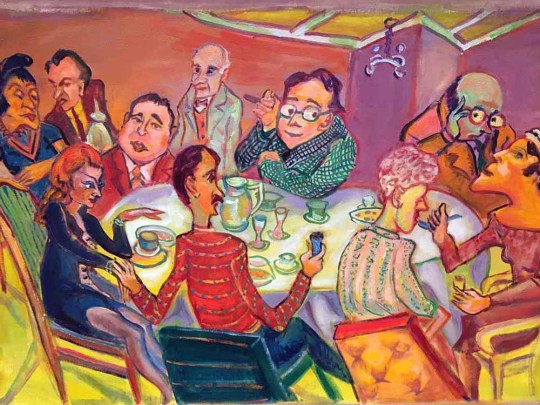
One hundred years ago today, on April 30, 1922, members of the Algonquin Round Table rented the 49th Street Theater for the evening and invited their friends to a satirical revue called No Siree. Its name was a takeoff on that of an immensely popular revue called La Chauve-Souris. Each performer chose his or her guests, ensuring an enthusiastic audience.
Heywood Broun was the MC. The first number was a parody of Eugene O’Neill’s plays Anna Christie and The Hairy Ape called The Greasy Hag (music by Arthur Samuels, played by Jascha Heifetz, no less). It featured an all-male chorus line of F.P.A. (Franklin P. Adams), Robert Benchley, Marc Connelly, George S. Kaufman, John Peter Toohey (a theatrical press agent), and Alexander Woollcott. The setting was up to the audience, multiple choice:

According to Connelly, the sketch included “a line so full of swear words that no one would quote it in mixed company” (the Twenties weren’t that far off from the Victorian Age).
The next number was He Who Gets Flapped, a not-so-subtle play on the title of a current drama called He Who Gets Slapped. It featured an original song by Dorothy Parker and Deems Taylor, “The Everlastin’ Ingenue Blues,” which included the lines
We are little flappers, never growing up, And we’ve all of us been flapping since Belasco was a pup. We’ve got the blues, we mean the blues, You’re the first to hear the devastating news. We’d like to take a crack at playing Lady Macbeth, But we’ll whisper girlish nothings with our dying breath. As far as we’re concerned, there is no sting in death We’ve got those everlasting ingénue blues.
It was sung by the 6’8” Robert Sherwood, in white flannels, blazer, and bowler, surrounded by petite chorus girls who included Tallulah Bankhead, Helen Hayes, Ruth Gillmore, Lenore Ulric, and Mary Brandon (whom Sherwood married later that year).

Above: Dorothy Parker in 1924 and Robert Sherwood in 1928.
Robert Benchley delivered a monologue (which was left off the program, to surprise the audience) that he had thought up in the cab on the way to the theater: a rambling, disjointed report delivered by an ill-prepared company treasurer at a meeting of the board of directors. It was so big a hit that it was filmed six years later, thus beginning a new career for Benchley in Hollywood. It was included, in modified form, in the 1943 film The Sky’s the Limit:
youtube
Other highlights of the program included a spoof of popular playwrights Zoe Akins, called “Zowie, or the Curse of an Akins Heart,” and A.A. Milne, called “Mr. Whim Passes By.” After the show, cast and audience (i.e., their friends) went to a party at the home of Herbert Swope, the editor of the NY World (newspaper), who often played poker with members of the Round Table. It lasted till 4:00 a.m.
A review in the Times the next day called the show silly and amateurish, but a later critic theorized that it marked a turning point in the Vicious Circle, ending their apprenticeship phase and moving into more serious comedy.

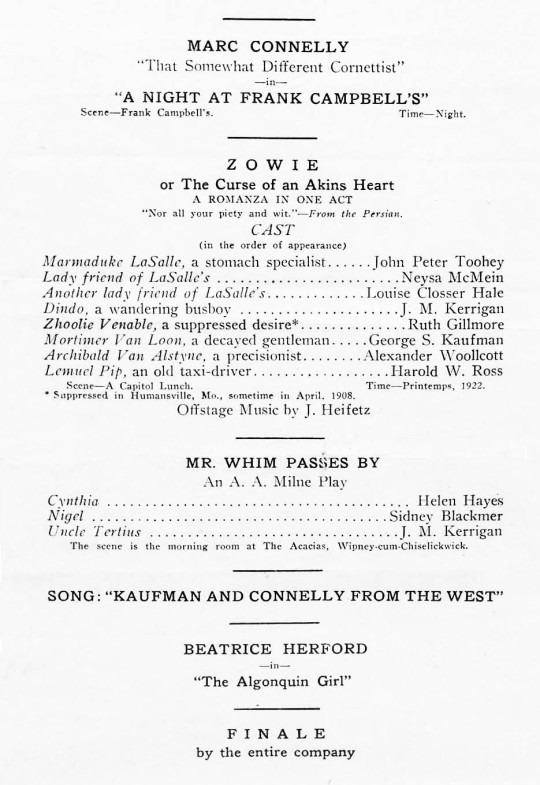
Photos: Painting of the Algonquin Round Table by Milton Yarensky via the Great Neck Record; Dorothy Parker by Vandamm via NYPL; Robert Sherwood by Vandamm via Wikipedia; program from Ashcroft & Moore Auctions
#New York#NYC#vintage New York#1920s#Algonquin Round Table#April 30#No Sirree#Robert Benchley#Dorothy Parker#Robert Sherwood#Heywood Broun#Franklin P. Adams#Marc Connelly#Jascha Heifetz#Milton Yarensky#Helen Hayes#Tallulah Bankhead#Herbert Swope
86 notes
·
View notes
Text


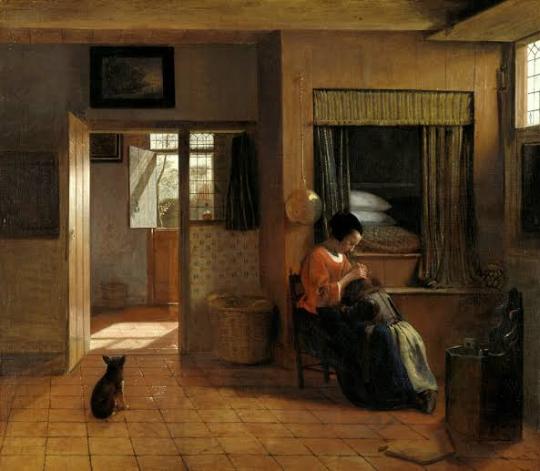



Reddit // A Mother Delousing Her Child's Hair, Pieter de Hooch // His Mother's Hair, April Ossmann // Braiding Your Hair, Jane O. Wayne // Hold on: The Life, Science, and Art of Waiting, Peter Toohey
25 notes
·
View notes
Text
Birthdays 3.18
Beer Birthdays
John Smith (1824)
William Ebling (1828)
James Toohey (1850)
Jason Chavez (1968)
Alexandra Nowell (1985)
Five Favorite Birthdays
Luc Besson; film director, writer (1959)
Will Durst; comedian (1952)
Edward Everett Horton; actor, narrator (1886)
Nikolai Rimsky-Korsakov; composer (1844)
John Updike; writer (1932)
Famous Birthdays
Bonnie Blair; speed skater (1964)
Irene Cara; pop singer (1959)
Edgar Cayce; psychic (1877)
Neville Chamberlain; British PM (1869)
Grover Cleveland; 22nd & 24th U.S. President (1837)
Richard Condon; writer (1915)
Dane Cook; comedian (1972)
Frederik Willem de Klerk; South African politician (1936)
Robert Donat; actor (1905)
Joy Fielding; writer (1945)
Bill Frisell; jazz musician (1951)
Jim Funk; pop singer, songwriter (1969)
Ernest Gallo; winemaker (1909)
Peter Graves; actor (1926)
Manly Hall; writer (1901)
William H. Johnson; artist (1901)
Queen Latifah; musician, actor (1970)
Stéphane Mallarmé; French poet (1842)
James McMurtry; rock guitarist, singer, actor (1962)
Wilson Pickett; pop singer (1941)
Pillsbury Dough Boy; advertising character (1965)
George Plimpton; actor, writer (1901)
Charley Pride; country singer (1938)
Raphael; artist (1483)
Michael Rapaport; actor (1970)
Joseph Schmitt; composer (1734)
Vanessa Williams; pop singer, actor (1963)
Kai Winding; jazz trombonist (1929)
1 note
·
View note
Photo


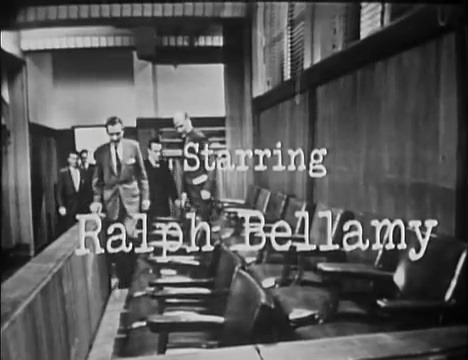
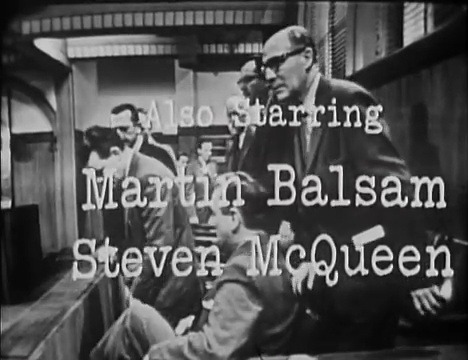


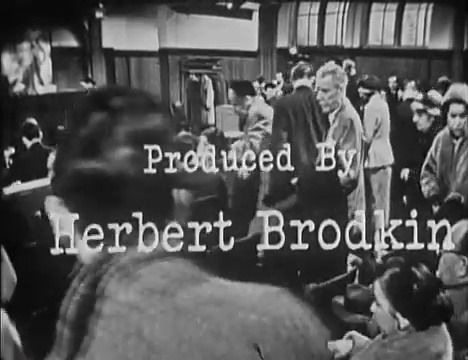
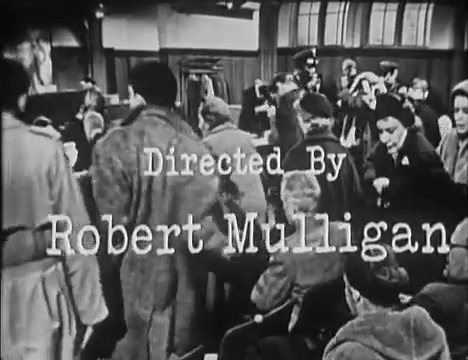
From the Golden Age of Television
The Defender - CBS - Febriary 20 & March 4, 1957
A presentation of Westinghouse Studio One
Drama
Running Time: 60 minutes/episode
Stars:
Ralph Bellamy as Walter Preston (defense attorney)
Martin Balsam as Francis Toohey (prosecutor)
Steve McQueen as Joseph Gordon (defendant)
William Shatner as Kenneth Preston (defense attorney)
Ian Wolfe as Judge Marsala
Vivian Nathan as Mrs. Gordon
David J. Stewart as Dr. Victor Wallach
Dolores Sutton as Norma Lane
Eileen Ryan as Betsy Fuller
Arthur Storch as Seymour Miller
Rosetta LeNoire as Mary Ellen Bailey
John McGovern as Dr. Horace Bell
Rudy Bond as Peter D'Agostino
Michael Higgins as Sgt. James Sheeley
Russell Hardie as 1st Guard
Milton Selzer as 2nd Guard
Iggie Wolfington as Court Clerk
Frank Marth as First Reporter
It was reported to be the first live television drama divided for broadcast on separate nights and one of the first cliffhanger television broadcasts
The story led Reginald Rose to develop a spinoff series, The Defenders, which began airing in 1961
#The Defender#TV#Studio One#Drama#1950's#Golden Age of Television#Ralph Bellamy#Martin Balsam#Steve McQueen#William Shatner#Ian Wolfe#Vivian Nathan#David J. Stewart
7 notes
·
View notes
Photo

The Fountainhead is a 1943 novel by Russian-American author Ayn Rand, her first major literary success. The novel's protagonist, Howard Roark, is an individualistic young architect who designs modernist buildings and refuses to compromise with an architectural establishment unwilling to accept innovation. Roark embodies what Rand believed to be the ideal man, and his struggle reflects Rand's belief that individualism is superior to collectivism.
Roark is opposed by what he calls "second-handers", who value conformity over independence and integrity. These include Roark's former classmate, Peter Keating, who succeeds by following popular styles but turns to Roark for help with design problems. Ellsworth Toohey, a socialist architecture critic who uses his influence to promote his political and social agenda, tries to destroy Roark's career. Tabloid newspaper publisher Gail Wynand seeks to shape popular opinion; he befriends Roark, then betrays him when public opinion turns in a direction he cannot control. The novel's most controversial character is Roark's lover, Dominique Francon. She believes that non-conformity has no chance of winning, so she alternates between helping Roark and working to undermine him. Feminist critics have condemned Roark and Dominique's first sexual encounter, accusing Rand of endorsing rape.
Twelve publishers rejected the manuscript before an editor at the Bobbs-Merrill Company risked his job to get it published. Contemporary reviewers' opinions were polarized. Some praised the novel as a powerful paean to individualism, while others thought it overlong and lacking sympathetic characters. Initial sales were slow, but the book gained a following by word of mouth and became a bestseller. More than 6.5 million copies of The Fountainhead have been sold worldwide and it has been translated into more than 20 languages. The novel attracted a new following for Rand and has enjoyed a lasting influence, especially among architects, entrepreneurs, American conservatives and right-libertarians.
The novel has been adapted into other media several times. An illustrated version was syndicated in newspapers in 1945. Warner Bros. produced a film version in 1949; Rand wrote the screenplay, and Gary Cooper played Roark. Critics panned the film, which did not recoup its budget; several directors and writers have considered developing a new film adaptation. In 2014, Belgian theater director Ivo van Hove created a stage adaptation, which has received mostly positive reviews.
The Fountainhead polarized critics and received mixed reviews upon its release. In The New York Times, Lorine Pruette praised Rand as writing "brilliantly, beautifully and bitterly", stating that she had "written a hymn in praise of the individual" that would force readers to rethink basic ideas. Writing for the same newspaper, Orville Prescott called the novel "disastrous" with a plot containing "coils and convolutions" and a "crude cast of characters". Benjamin DeCasseres, a columnist for the New York Journal-American, described Roark as "one of the most inspiring characters in modern American literature". Rand sent DeCasseres a letter thanking him for explaining the book's themes about individualism when many other reviewers did not. There were other positive reviews, although Rand dismissed many of them as either not understanding her message or as being from unimportant publications. A number of negative reviews focused on the length of the novel, such as one that called it "a whale of a book" and another that said "anyone who is taken in by it deserves a stern lecture on paper-rationing". Other negative reviews called the characters unsympathetic and Rand's style "offensively pedestrian".
In the years following its initial publication, The Fountainhead has received relatively little attention from literary critics. Assessing the novel's legacy, philosopher Douglas Den Uyl described The Fountainhead as relatively neglected compared to her later novel, Atlas Shrugged, and said, "our problem is to find those topics that arise clearly with The Fountainhead and yet do not force us to read it simply through the eyes of Atlas Shrugged." Among critics who have addressed it, some consider The Fountainhead to be Rand's best novel, although in some cases this assessment is tempered by an overall negative judgment of Rand's writings. Purely negative evaluations have also continued; a 2011 overview of American literature said "mainstream literary culture dismissed [The Fountainhead] in the 1940s and continues to dismiss it".
The Fountainhead has continued to have strong sales throughout the last century into the current one. By 2008, it had sold over 6.5 million copies in English. It has also been referred to in a variety of popular entertainments, including movies, television series, and other novels.
The year 1943 also saw the publication of The God of the Machine by Isabel Paterson and The Discovery of Freedom by Rose Wilder Lane. Rand, Lane, and Paterson have been referred to as the founding mothers of the American libertarian movement with the publication of these works. Journalist John Chamberlain, for example, credited these works with converting him from socialism to what he called "an older American philosophy" of libertarian and conservative ideas. Literature professor Philip R. Yannella said the novel is "a central text of American conservative and libertarian political culture". In the United Kingdom, Conservative politician Sajid Javid has spoken of the novel's influence on him and how he regularly rereads the courtroom scene from Roark's criminal trial.
The book has a particular appeal to young people, an appeal that led historian James Baker to describe it as "more important than its detractors think, although not as important as Rand fans imagine". Philosopher Allan Bloom said the novel is "hardly literature", but when he asked his students which books mattered to them, someone always was influenced by The Fountainhead. Journalist Nora Ephron wrote that she had loved the novel when she was 18, but admitted that she "missed the point", which she suggested is largely subliminal sexual metaphor. Ephron wrote that she decided upon rereading that "it is better read when one is young enough to miss the point. Otherwise, one cannot help thinking it is a very silly book."
The Fountainhead has been cited by numerous architects as an inspiration for their work. Architect Fred Stitt, founder of the San Francisco Institute of Architecture, dedicated a book to his "first architectural mentor, Howard Roark". According to architectural photographer Julius Shulman, Rand's work "brought architecture into the public's focus for the first time". He said The Fountainhead was not only influential among 20th century architects, but also it "was one, first, front and center in the life of every architect who was a modern architect". The novel also had a significant impact on the public perception of architecture. During his 2016 presidential campaign, real estate developer Donald Trump praised the novel, saying he identified with Roark.
Roark Capital Group, a private equity firm, is named for the character Howard Roark.
Although Rand had some mainstream success previously with her play Night of January 16th and had two previously published novels, The Fountainhead was a major breakthrough in her career. It brought her lasting fame and financial success. She sold the movie rights to The Fountainhead and returned to Hollywood to write the screenplay for the adaptation. In April 1944, she signed a multiyear contract with movie producer Hal Wallis to write original screenplays and adaptations of other writers' works.
The success of the novel brought Rand new publishing opportunities. Bobbs-Merrill offered to publish a nonfiction book expanding on the ethical ideas presented in The Fountainhead. Though this book was never completed, a portion of the material was used for an article in the January 1944 issue of Reader's Digest. Rand was also able to get an American publisher for Anthem, which previously had been published in England, but not in the United States. When she was ready to submit Atlas Shrugged to publishers, over a dozen competed to acquire the new book.
The Fountainhead also attracted a new group of fans who were attracted to its philosophical ideas. When she moved back to New York in 1951, she gathered a group of these admirers to whom she referred publicly as "the Class of '43" in reference to the year The Fountainhead was published. The group evolved into the core of the Objectivist movement that promoted the philosophical ideas from Rand's writing.
Daily inspiration. Discover more photos at http://justforbooks.tumblr.com
11 notes
·
View notes
Text
Week 2
From Origins to the Future: The Hero and the Epic Quest.
This week and the next we shall engage in one of the traditional approaches to comparative practice, following various re-appearances of a myth / hero / genre through successive literary periods and in different countries. The example we shall use is the figure of Odysseus / Ulysses in epic writing and film from Homer to the turn of the 21st century. We shall consider how this figure has changed, and focus on specific episodes of Homer’s original epic poem.
Homer, The Odyssey (read in particular Book 1 and the episode of the Cyclops (in Book 9);
Dante, Inferno (read canto 26, Ulysses);
James Joyce, Ulysses (read the ‘Cyclops’ episode (the 12th, pp. 280-330 in Johnson))
Stanley Kubrick, 2001: A Space Odyssey (1968) (Film: Please watch this in advance of the seminar)
Some secondary reading on Homer’s Odyssey & the figure of Odysseus/Ulysses
Boitani, Piero, The Shadow of Ulysses: Figures of a Myth, tr. Anita West (Oxford: Clarendon Press, 1994). [Has an excellent chapter on Dante's Ulysses]
Doherty, Lillian E., "The Snares of the Odyssey: A Feminist Narratological Reading", in Texts, Ideas, and the Classics: Scholarship, Theory, and Classical Literature, ed. by S. J. Harrison (Oxford: Oxford University Press, 2001), pp. 117-133. Foley, John M. (ed.), A Companion to Ancient Epic (Oxford: Blackwell, 2005)
Fowler, Robert (ed.), The Cambridge Companion to Homer (Cambridge: Cambridge UP, 2004).
Graziosi, Barbara, end Emily Greenwood (eds.), Homer in the Twentieth-Century: Between World Literature and the Western Canon (Oxford: Oxford University Press, 2007).
Jong, Irene de, A Narratological Commentary on the Odyssey (Cambridge: Cambridge University Press 2001)
Hall, Edith, The Return of Ulysses: A Cultural History of Homer’s Odyssey (London and New York: I.B. Tauris, 2008).
Lane Fox, Robin, Travelling Heroes: Greeks and their Myths in the Epic Age of Homer (London: Allen Lane, 2008)
Manguel, Alberto, Homer’s The Iliad and The Odyssey A Biography (London: Atlantic Books, 2007).
Murnaghan, Sheila, Disguise and Recognition in the Odyssey (Princeton: Princeton University Press, 1987).
Stanford, W. B. The Ulysses Theme: A Study in the Adaptability of a Traditional Hero (Ann Arbor: University of Michigan Press, 1963).
Some secondary reading on Kubrick
Bizony, Piers, 2001: Filming the Future (London: Aurum, 1994)
Chion, Michel, Kubrick's Cinema Odyssey. Trans. Claudia Gorbman (London: BFI, 2001)
Ciment, Michel, Kubrick. Trans. Gilbert Adair (New York: Holt, Rinehart, and Winston, 1983)
Cocks, Geoffrey, James Diedrick, and Glenn Perusek (eds.), Depth of Field: Stanley Kubrick, Film and the Uses of History (Madison, WI: University of Wisconsin Press, 2006)
Falsetto, Mario, Stanley Kubrick: A Narrative and Stylistic Analysis (Westport, Conn; London: Praeger, 1994)
Falsetto, Mario (ed.), Perspectives on Stanley Kubrick (New York: G.K. Hall; London: Prentice Hall, 1996)
Herr, Michael, Kubrick (New York: Grove Press, 2000)
Kolker, Robert (ed.), Stanley Kubrick's 2001: A Space Odyssey: New Essays (Oxford: Oxford University Press, 2006)
Nelson, Thomas Allen, Kubrick: Inside a Film Artist's Maze (Bloomington: Indiana University Press, 1982)
Naremore, James, On Kubrick (London: British Film Institute, 2007)
Rasmussen, Randy, Stanley Kubrick: Seven Films Analyzed (London: McFarland, 2001)
Wheat, Leonard F., Kubrick's 2001: A Triple Allegory (Lanham, MD, and London: Scarecrow Press, 2000)
Some secondary reading on the epic
Bates, Catherine (ed.), The Cambridge Companion to the Epic (Cambridge: Cambridge University Press, 2010)
Beissinger, Margaret, Jane Tylus, and Susanne Wofford (eds.) Epic Traditions in the Contemporary World: The Poetics of Community (Berkeley: University of California Press, 1999)
Clarke, M. J., B. G. F. Currie, and R. O. A. M. Lyne (eds.), Epic Interactions: Perspectives on Homer, Virgil, and the Epic Tradition (Oxford: Oxford University Press, 2006)
Danow, David K., Transformation as the Principle of Literary Creation from the Homeric Epic to the Joycean Novel (Lewiston, NY: Edwin Mellen Press, 2004)
Elley, Derek, The Epic Film: Myth and History (London: Routledge & Kegan Paul, 1984)
Foley, John Miles (ed.), A Companion to Ancient Epic (Oxford: Wiley-Blackwell, 2009)
Hardie, Philip, The Epic Successors of Virgil: A Study in the Dynamics of a Tradition (Cambridge: Cambridge University Press, 1993)
Hainsworth, J. B., The Idea of Epic (Berkeley: University of California Press, 1991)
Hurst, Isobel, Victorian Women Writers and the Classics: The Feminine of Homer (Oxford and New York: Oxford University Press, 2006)
King, Katherine Callen, Ancient Epic (Chichester: John Wiley & Sons, 2009)
Konstan, David and Kurt A. Raaflaub, eds., Epic and History (Chichester: Wiley-Blackwell, 2010)
Merchant, Paul: The Epic (London: Methuen, 1971)
Miller, Dean A., The Epic Hero (Baltimore and London: Johns Hopkins University Press, 2000)
Johns-Putta, Adeline, The History of the Epic (Basingstoke and New York: Palgrave Macmillan, 2006)
Newman, John Kevin, The Classical Epic Tradition (Madison: University of Wisconsin Press, 1986)
Quint, David, Epic and Empire: Politics and Generic Form from Virgil to Milton (Princeton, N.J: Princeton University Press, 1993).
Roisman, Hanna M., and Joseph Roisman (eds.), Essays on Homeric Epic (Waterville, ME: Colby College, 2002)
Toohey, Peter, Reading Epic: An Introduction to the Ancient Narratives (London : Routledge, 1992)
Tucker, Herbert F., Epic: Britain's Heroic Muse 1790-1910 (Oxford and New York: Oxford University Press, 2008)
Winnifrith, Tom, Penelope Murray and K.W. Gransden, eds., Aspects of the Epic (London: Macmillan, 1983)
Some secondary reading on Ulysses
Guidebooks: (These classic ‘guidebooks’ can supplement the annotations in your edition of Ulysses.)
Don Gifford, Ulysses Annotated (Berkeley: University of California Press, 1988) Weldon Thornton, Allusions in Ulysses: An Annotated List (Chapel Hill: University of North Carolina Press, 1968) Harry Blamires, The New Bloomsday Book (London: Routledge, 1996)
Some suggested criticism on Ulysses
(This is a small selection of Joycean criticism, from useful collections of essays (Attridge, Latham, Hart and Hayman), to critics who read language and narrative very closely (Kenner, Senn), to works on the Homeric in Ulysses (Flack, Kenner, Seidel), to a few examples of studies which read Joyce through theoretical, historical, comparative, and postcolonial approaches.)
Derek Attridge, ed., The Cambridge Companion to James Joyce (Cambridge: Cambridge University Press, 1990) — ed., James Joyce’s ‘Ulysses’: A Casebook (Oxford: Oxford University Press, 2004) Scarlett Baron, ‘Strandentwining Cable’: Joyce, Flaubert, and Intertextuality (Oxford: Oxford University Press, 2012) Frank Budgen, James Joyce and The Making of ‘Ulysses’ (Bloomington: Indiana University Press, 1961) Vincent J. Cheng, Joyce, Race and Empire (Cambridge: Cambridge University Press, 1995) Leah Culligan Flack, Modernism and Homer: The Odysseys of H.D., James Joyce, Osip Mandelstam, and Ezra Pound (Cambridge: Cambridge University Press, 2015) Clive Hart and David Hayman, eds., James Joyce’s ‘Ulysses’: Critical Essays (Berkeley: University of California Press, 1974) Hugh Kenner, Joyce’s Voices (Berkeley, Los Angeles, and London: University of California Press, 1978) — ‘Ulysses’ (London: George Allen and Unwin, 1980) Sean Latham, ed., The Cambridge Companion to ‘Ulysses’ (New York: Cambridge University Press, 2014) Karen Lawrence, The Odyssey of Style in ‘Ulysses’ (Princeton: Princeton University Press, 1981) Andrew J. Mitchell and Sam Slote, eds., Derrida and Joyce: Texts and Contexts, ed. (Albany: State University of New York Press, 2013) Katherine Mullin, James Joyce, Sexuality and Social Purity (Cambridge: Cambridge University Press, 2003) Michael Seidel, Epic Geography: James Joyce’s ‘Ulysses’ (Princeton and Guilford: Princeton University Press, 1976) Fritz Senn, Inductive Scrutinies: Focus on Joyce, ed. Christine O’Neill (Dublin: Lilliput, 1995) — Joyce’s Dislocutions: Essays on Reading as Translation, ed. John Paul Riquelme (Baltimore and London: Johns Hopkins University Press, 1984)
Online searchable concordance of Ulysses (e.g. if you can’t remember where the renowned Irish hero ‘Napoleon Bonaparte’ is mentioned, type it into a ‘string search’ and untick ‘whole word’) http://joyceconcordance.andreamoro.net/
Ulysses Synopsis
Ulysses: A Synopsis “Telemachia” 1 - “Telemachus” (Oxford World’s Classics, ed. J. Johnson, pp. 3-23 / Penguin, ed. D. Kiberd, pp. 1-28)- The chapter opens with Buck Mulligan celebrating a parodic mass in which Stephen Dedalus becomes an acolyte in spite of himself. Stephen is a melancholy artist obsessed with guilt since the death of his mother; his taciturn nature is contrasted with Mulligan’s clownish joviality. The Englishman Haines, their guest in the Martello Tower, combines seriousness with an enthusiasm for Gaelic culture; the three characters illustrate three possible positions in relation to Ireland, which is symbolised by the old peasant woman who brings in the milk: the dispossessed Son (Stephen), the treacherous usurper (Mulligan); the representant of English imperialism (Haines) who - through his dream of the panther, traditionally a symbol of Christ - is also associated by Stephen with the imperialism of the Roman Catholic Church. Stephen chooses errancy and exile: he gives over his key and will not come back. 2- “Nestor” (OWC 24-36 / Penguin 28-45)- Stephen teaches history and English Literature to a class of well-off schoolchildren who are disconcerted by his caustic humour and riddles. He confronts Mr Deasy (Nestor in Homer’s Odyssey) on Irish history and economics. The old headmaster cherishes his inaccurate reminiscences and promotes thrift, whereas Stephen squanders away the little money he has. Stephen views history as a nightmare. Despite the antagonism, Stephen agrees to help Mr Deasy is his fight against the foot and mouth disease which affects Irish cattle by helping him to publish a letter in the press. 3 - “Proteus” (37-50/45-64)- Stephen’s philosophical and aesthetic meditations lead him to question the reality of the outside world. Through a complex philosophical argument which hesitates between Aristotle and Berkeley, he redefines for himself the nature of visual and auditory perception. His literary recollections blend with the painful evocation of his past, especially the unsuccessful exile in Paris from which a telegram announcing his mother’s death recalled him. The sterility of Stephen’s “creations” in this chapter (which include urinating and depositing a snot on a ledge of rock [cf. Bloom’s own excremental “creation” in “Calypso”]) is pitted against the remarkable metamorphic poetic prose of the narrative and of Stephen’s stream of consciousness. Odyssey 4 - “Calypso” (53-67/64-85)- Leopold Bloom, who will increasingly become the major protagonist, is introduced in his home at 7 Eccles Street and is first seen preparing breakfast for himself and his wife Molly, who is still in bed. He goes out in search of a pork kidney at a Jewish butcher’s, where he picks up a leaflet advertising plantations in Palestine (inaugurating the theme of the lost, promised land, and of the “recall”). He brings Molly her mail, which includes a letter from Boylan, her future lover later in the day, announcing his visit. He explains to Molly the meaning of metempsychosis; the chapter ends with his defecation in the outhouse, mingled with his remarks on cheap literature. 5 - “The Lotus Eaters”(68-83/85-107) - Bloom has left his house for what will become the epic wanderings of an untypical literary hero, on an ordinary Dublin day - 16 June 1904. He first goes to fetch the reply, sent post restante, from his unknown penfriend Martha Clifford, to whom he sends amorous letters signed “Henry Flower”. He runs into several acquaintances on the way, unwittingly “throws away” a tip for the horse races (the source of a later misunderstanding), and eventually goes to the public baths. Throughout the chapter, drugs of all kinds (perfumes, tobacco, medicine, eroticism, religion, etc.) express a voluptuous narcissistic abandonment to the world of the senses. 6 - “Hades” (84-111/107-147)- Bloom goes to Paddy Dignam’s funeral together with Simon Dedalus (Stephen’s father) and other characters already seen in Dubliners. The conversation soon takes on a malevolent anti-Semitic tone which puts Bloom ill at ease. He thinks of death, remembering both his father’s suicide and the death of his son when he was only eleven days old. Bloom catches his first sign of Stephen (who does not see him). 7 - “Aeolus” (112-143/147-189)- Broken down into a series of newspaper articles complete with headings, this episode brings together, in different scenes and locations of the newspaper office, Bloom, Stephen, various “windbags” including Myles Crawford, the king of windy and hollow journalistic rhetoric. The orators outdo one another in eloquence and the parable of the captive Jews provides the Irish with a mythical model. Stephen narrates a story illustrative of the paralysis of his fellow Dubliners which nobody pays attention to, while Bloom the ad canvasser gets severely ticked off by Myles Crawford. 8 - “Lestrygonians” (144-175/190-234)- The “food chapter”: Bloom is obsessed with food (it is between 1pm and 2pm) and alimentary thoughts, and tastes and smells of all kinds percolate through into the language and style of the episode (the rhythm of the chapter is dictated by the “peristaltic” [digestive] movement of the organism). Put off by the monstrous devouring mouths in the restaurant and obsessed by the impending encounter between Molly and Boylan, he finally orders a Gorgonzola sandwich and a glass of Burgundy wine at Davy Byrne’s pub. 9 - “Scylla and Charybdis” (176-209/235-280)- In the National Library, Stephen spins out his Aristotelian theory of artistic creation which boils down to a sublimated autobiography; his paradoxes on Shakespeare’s life and works fail to convince his Platonist audience. In the complex reasoning of the young artist, Shakespeare becomes like a god who begets himself through his works. Bloom puts in an appearance; Mulligan meets up with Stephen and offers a more burlesque conclusion to the philological / theological debate. 10 - “Wandering Rocks” (210-244/280-328)- This chapter is a pause in the narrative of Stephen’s and Bloom’s day, and it has no precise correspondence in Homer’s Odyssey. This central and “pedestrian” chapter is made up of 19 episodes which offer vignettes and snapshots of the various characters and cross-sections of the Irish capital and society, including Church (Father Conmee) and State (the Viceroy’s cavalcade); the chapter breaks down the so far focalised point of view. Stephen and Bloom appear only briefly and are not mentioned among the witnesses of the Viceroy’s cavalcade through the city. 11 - “Sirens” (245-279/328-376)- The language of this chapter aspires to the condition of music and forges linguistic equivalents to trills, staccatos, counterpoints, etc. The venue is the Ormond Bar, run by two flashy barmaids or “sirens”; while the tenors are busy competing against each other in a virile singing contest, Bloom listens and replies to Martha. Having eluded the seductive snares of music, he exits, leaving behind an ironic fart. 12 - “Cyclops” (280-330/376-449)- A satire against the bellicose patriotism and anti-Semitism of the Citizen, the “Cyclops” who eventually attacks Bloom physically, the chapter oscillates between the Citizen’s rhetorical bombast and sarcastic deflations which leave unscathed neither the British Empire nor Irish nationalism, while the anonymous narrator - a sardonic barfly and debt collector - offers a brilliant instance of Dubliners’ garrulity. The narrative is periodically interrupted by parodic asides in other voices and styles. Bloom the wandering Jew, who had come to Barney Kiernan’s pub to arrange to offer some money to Paddy Dignam’s widow, finds himself involved in an argument about nationalism and attempts to expound his conception of humanity, love and homeland. At the end, his escape from the Citizen’s assault is turned into a grandiloquent apotheosis. 13 - “Nausicaa” (331-365/449-499)- Bloom rests on the Sandymount rocks (Stephen in “Proteus” had also walked along Sandymount beach) and gazes at young girls in their bloom. One of them, Gerty MacDowell, teases him into an erection by an increasingly daring exhibitionistic pose; the distant eroticism ends with Bloom’s masturbation, climaxing with fireworks. The narrating voice is that of a writer of the romantic pulp fiction then fed to women - the kind of books read by Gerty, who accordingly sees in Bloom a mysterious “dark stranger”. When the point of view shifts to Bloom, we see Gerty depart limping; Bloom dozes off in postmasturbatory gratitude. The accelerated crescendo of the first “tumescent” part is followed by the exhausted sobriety of the second, “detumescent” half. 14 - “Oxen of the Sun” (366-407/499-561)- Bloom’s and Stephen’s paths cross once more in the lying-in hospital, amidst roistering medics. The chapter takes us through a roughly chronologised pastiche of the different styles of the English language until the turn of the century, deceptively mimicking the evolution of the foetus until its birth. The painful delivery of Mina Purefoy takes on a universal value and, although the talk ominously focuses on sterility and contraception, a thunderclap and a rain shower at the moment of birth symbolise the triumph of fertility. 15 - “Circe” (408-565/561-703)- Blooms monitors from a distance Stephen’s drunken escapade to the red-light district, and follows him into the hallucinatory atmosphere of Bella Cohen’s brothel (Circe’s den in the Homeric parallel). The characters experience metamorphoses in a wild oneiric dramatisation of their fantasies, obsessions and senses of guilt. Stephen gets involved in a broil with two English soldiers and is knocked out cold; Bloom rescues him and transforms him into the ambiguous vision of his dead son Rudy. “Nostos” [=homecoming] 16 - “Eumaeus” (569-618/704-766)- Bloom leads Stephen to the cabman’s shelter, and the shared physical exhaustion (it is past midnight) and the unreliable narrator turn the chapter into an amusing, if often tedious, collection of deliberately jaded linguistic stereotypes, full of misunderstandings and approximations. 17 - “Ithaca” (619-689/766-871)- This impersonal catechism narrates the last actions of the novel: Bloom takes Stephen to 7 Eccles Street and offers him hot chocolate, they exchange views of Irish and Jewish culture, Stephen refuses Bloom’s offer of a bed for the night, they urinate together under the stars, and Stephen finally departs into the night. Bloom, back in the house, finds traces of Molly’s visitor earlier in the day, goes to bed, where he finds other traces of the visitor’s earlier presence, gives Molly an expurgated account of his day, and finally falls asleep, his head to her feet. The dialogic play between questions and answers universalises all the themes, sorts out human knowledge into vast catalogues, and finally transform the couple in bed into astral bodies. 18 - “Penelope” (690-732/871-933)- Molly’s thoughts flow freely along eight unpunctuated, meandering sentences. She begins with a reaction to Bloom’s request that she make breakfast in the morning, continuous with a celebration of her afternoon with Boylan, proceeds to review her marriage, her girlhood on Gibraltar, her infatuations and dreams of future romances, and finally returns to Bloom, seemingly reinstated into her imaginary life; this is one of the meanings of her numerous final “yesses”, also an affirmation of life itself.
Additional suggestions on Joyce's Ulysses/ Odysseus
Some of the texts through which Joyce reads and receives the figure of Odysseus/ Ulysses
Bérard, Victor, Les Phéniciens et l'Odyssée [originally published in 1902-03, there are no English translations that I know of; but you can find a lot about it, and Joyce's use of it in the book by Seidel, listed below; Bérard held the view that the Odyssey was "written" by a Greek poet, but recorded the travels of Phoenician sailors - the Phoenicians were a semitic people, which is relevant when you think that Leopold Bloom (Joyce's Ulysses figure) is a Jew]
Butler, Samuel, The Authoress of the Odyssey: Where and when she wrote, who she was, the use she made of the Iliad, and how the poem grew under her hands [originally published in 1897; Butler also transalted the Iliad and the Odyssey. There are various editions, including a cheap Kindle version; and it is in the library. Butler suggests that the Odyssey takes place in the island of Sicily, around the port city of Trapani, and that it is narrated by princess Nausicaa. The relevance to Joyce's book, which set on an island in and around the port city of Dublin, and whose final words are narrated by a woman, is evident.]
Lamb, Charles, The Adventures of Ulysses [originally published in 1808, there are various editions in print, and a free Kindle version. The book really is about the adventures and was meant as a book for boys, not as a full tranlation or account of the entire Odyssey. Joyce read this as child and wrote an essay at school about it!]
See also:
Seidel, Michael, Epic Geography: James Joyce's Ulysses (Princeton, N.J.: Princeton University Press, 1976) [not a book consulted by Joyce - of course! - but it looks at parallels between the geography of the Odyssey and of Ulysses and the movements of the characters, and relies extensively on Bérard's Les Phéniciens et l'Odyssée]
4 notes
·
View notes
Text
Indian Expeditions Down Under
There is a certain allure to cricket played in Australia. This could be attributed to the massive iconic venues, sunny weather when it is cold and dreary in most parts of the world, revolutionary television coverage pioneered by channel 9 and sporting wickets.
As the test series gets under way in Sydney with the 1st ever day and night match between the two countries, my mind goes back to the battles waged down under since I started following cricket in the 70s. The Aussies were practically invincible at home for most of that decade as they humiliated their bitter rivals England in 74-75 & the mighty Windies in 76-76. I still recall hearing about the exploits of Lillie, Thompson & the Chappell brothers through the crisp commentary of Alan McGilvray & Jim Maxwell on Radio Australia short wave.
There had been only 2 previous tours by India to Australia in 1947-48 & 1967-68. On both occasions, the hosts had won 4-0. Therefore history was against the tourists, when they visited Australia at the end of 1977 after a gap of 10 years, However India were up against a severely weakened team due to the exodus to Kerry Packer’s world series cricket. Only Thompson resisted the temptation of joining the Packer bandwagon and a 41- year old Simpson was recalled after several years of retirement to captain a young and virtually unknown team. It still turned out to be a close series with Australia winning 3-2. Simpson apart from marshalling his young troops well, also scored an epic 176 in the 2nd test at Perth and 100 in the final test in Adelaide with 539 runs in the series. Australia won the first 2 matches at Brisbane and Perth narrowly by 16 runs & 2 wickets respectively. Tony Mann became only the second batsman in test history to score a century as a night watchman at Perth. India came back strongly with thumping wins at Melbourne & Sydney, as the Indian spin trio of Bedi (captain), Chandra & Prasanna wove their magic for the last time in their illustrious careers. Chandra picked up 12 wickets at Melbourne as he bowled India to victory. The final test at Adelaide went down to the wire with Australia romping home by 47 runs as India almost reached the massive 493 set for victory. India felt the absence of a genuine fast bowler and in hindsight could have included Kapil Dev who was just making his mark in domestic cricket. Gavaskar scored 3 consecutive centuries and was well supported by Vishwanath and Mohinder Amarnath, all three finished with over 400 runs in the series. The Aussies uncovered a number of new talents during that series such as Peter Toohey, Rick Darling, Wayne Clarke, Graham Yallop, Gary Cozier & Craig Sarjeant.
The Packer boys had come back by the time India toured next in 1980-81. Thompson & Ian Chappell were no longer playing, but the home team had Len Pascoe, Alan Border, Kim Hughes, Graeme Wood & Rodney Hogg to support stalwarts such as Greg Chappell, Lillie & Walters. The tourists made a shaky start losing easily in Sydney and scrapping through to a draw in Adelaide. Sandeep Patil was the hero at Adelaide with a blistering 174 after being knocked down by Len Pasco in the previous match. India defied expectations with a thrilling victory in the 3rd test at Melbourne to draw the series. Vishwanath whose place in the team was in doubt, silenced his critics with a brilliant century at the MCG. Gavaskar almost forfeited the match when he forced his partner Chetan Chauhan to walk off the field after an altercation with the opposition following a doubtful LBW decision. Luckily the manager Wing Commander Durrani intervened to cool things down. Chauhan who had a brilliant series was unlucky to miss out yet again on a well-deserved century. India successfully defended a meagre target of 142 thanks to the brilliance of Kapil Dev who braved a knee problem with pain killer injections to finish with figures of 5 for 28 as Australia was skittled out for 83. Kapil was ably supported by Dilip Doshi and Karsan Ghavri who bowled Greg Chappell round his legs in the 2nd innings. In addition to the test series, there was also a tri-series ODI competition featuring New Zealand as well. As was expected, the Indians who were still finding their feet in limited-over cricket did not fare well in this series. It was a treat to see the highlights brought by channel 9 for the first time during the 80-81 series. Even in those early days, their coverage was really innovative and brought out a different dimension to watching the game on TV.
After a gap of 5 years, India toured again in 1985-86. At the beginning of 1985, India stunned the cricketing world again in the ODIs. Following on from their shock win in the 1983 world cup, they won the world championship of cricket which was likely a mini-world cup and held to mark the 150th anniversary of the European settlement in Victoria. The enduring image of the win was the Indian team going around the MCG ground after easily winning the final against Pakistan, in the Audi car won by Ravi Shastri who was declared the champion of champions. We were privileged to watch most of the matches in that tournament live and by then the channel 9 coverage had evolved considerably. Messers Greig, Lawry & Benaud delighted Indian fans with their magnificent commentary and insight into the game.
The 1985-86 tour was a tale of missed opportunities as India could not get over the line in at least 2 matches. They were foiled by some stoic resistance from the Aussies especially the captain Allan Border. Gavaskar scored 2 centuries and others like Amarnath & Srikkanth piled on the runs against a relatively weak attack. Craig McDermott was the only potent bowler on the Aussie side and they were still in a rebuilding phase after Kim Hughes had quit the previous summer. Steve Waugh made his debut in the 2nd test and showed early glimpses of his talent . The other newcomers like David Boon, Geoff Marsh and the beanpole like fast bowler Bruce Reid were to be become mainstays of the team in future years. India did very well in the ODI tri-series which also featured the Kiwis. They however could not beat the Aussies in the finals.
The next series in 1991-92 was quite a let-down for the Indian team which could not quite match a strong home side led by Allan Border with experienced cricketers like Boon, Marsh, McDermott, Merv Highes & Dean Jones. Mark Taylor who was establishing himself in the team had a brilliant series with 422 runs second only to David Boon who finished with 556 runs. Shane Warne had the most inauspicious start to his career at Sydney and his bowling was taken to the cleaners by Ravi Shastri who scored a double century. The saving grace for India was the batting of Tendulkar who displayed his prodigious talent in no small measure with 2 brilliant centuries.The other big gain for India during the tour was the emergence of Srinath as a genuine quick bowler following in the footsteps of Kapil Dev who still a force to reckon with on the tour capturing 25 wickets. Manoj Prabhakar also ended with a creditable haul of 19 wickets. In the tri-series which followed also featured the West Indies, India managed to reach the finals but were no match for the Aussies who won easily. Kris Srikkanth won 2 player of the match awards during this tournament on the last international tour of his career. The world cup which was the climax of a long Australian summer was also a disappointment, with the only bright spark for India being the victory against the eventual winners Pakistan.
India had to wait almost 9 years for their next tour in 1999-2000. This was a very low-key series and the Indian team led by Tendulkar was no match for the Aussies. Bret Lee who was at his peak broke the left thumb of the Indian opener Sadagopan Ramesh and along with McGrath proved lethal for the Indian battsman. India lost all 3 tests by huge margins despite Tendulkar’s determined displays. Ponting, Langer, Waugh & Gilchrist dominated the Indian bowling.The tri-series one-dayers featuring Pakistan were equally disastrous with India notching a solitary win in 8 matches.
The tour in 2003 was a watershed in India’ test history abroad. Well led by Sourav Ganguly, India proved they were no pushovers any more overseas. Ganguly set the tone for the Indian performance by scoring a brilliant 144 in the first test at Brisbane, which was drawn. Rahul Dravid’s brilliant double century to match Ricky Ponting who achieved the same feat and 6 for 41 by Ajith Agarkar helped them register a historic win in Adelaide. Australia came back strongly to win the next test at Melbourne. India almost won the final test at Sydney, which was Steve Waugh’s last match and he signed off with 80 in the 2nd innings. India had earlier posted a mammoth 705 for 7 in the 1st innings thanks to 241 from Tendulkar and 178 from Laxman.
It was mixed bag in 2007-08 and the tour was shrouded in controversy The second test in Sydney marred by poor umpiring decisions against the visitors, also saw the Monkeygate scandal when Harbhajan Singh was charged with racial abuse against Andrew Symonds. Harbhajan was suspended from the next test, which was revoked after a protest by India. Steve Bucknor who made some contentious decisions was stood down by the ICC from the next match at Perth, which also created a controversy. The Sydney test had a dramatic climax, with Michael Clarke getting 3 wickets in the last over of the game. India went into the Perth test down 0-2 after losing the 1st test at Melbourne by a massive 371 runs and the 2nd test at Sydney by 122 runs despite gaining a substantial 1st innings lead. The tourists stayed alive in the series winning the Perth test mainly due to some splendid bowling by the young Ishant Sharma. His spell in Perth against Ponting arguably the best batsman in the world at the time is still a vivid memory. Sehwag made a triumphant comeback with 151 in the last test in Adelaide, which ended in a draw. Laxman who relished batting on the hard wickets continued his dominance over the Australia bowlers. He finished 2nd in the batting averages after Tendulkar who got over 500 runs with 2 centuries. Kumble’s leadership during a difficult series was commendable and he also led the bowling averages with 20 wickets second only to Brett Lee with 24 wickets. India lost the series 1-2, but had the consolation of winning the tri-series that followed, which also featured Sri Lanka.
The tour in 2011-12 was a rather forgettable affair and capped a miserable year following India’s crushing defeat in England that summer. Two legends Dravid & Laxman retired after the Aussie series. They will be remembered as much for exemplary conduct as for their sublime batting skills. Their record match winning 376 run 5th wicket partnership in Eden Gardens against Steve Waugh’s men in 2001 is the best in Indian test history. The 2011-12 series also saw the coming of age of Virat Kohli who resurrected his career with a brilliant 116 in the last test at Adelaide. This could not prevent India reeling to a 4th loss and a series whitewash. They also finished last in the tr-series also featuring Sri Lanka.
The 2014 test series was preceded by the one of the biggest tragedies in cricketing history. The young and promising life of Philip Hughes was cruelly cut short after he died following a head injury during a Sheffield shield match. The series was slightly delayed and itinerary rearranged as this extremely unfortunate event cast a pall of gloom. India almost pulled off a sensational win in the 1st test at Adelaide chasing 364 to win falling short by only 49 runs. Credit for this goes to Virat Kohli who scored a sensational 141 to add to his 115 in the first innings. Kohli also deputised as captain for the injured Dhoni, before taking over on a permanent basis after the 3rd test at Melbourne when Dhoni announced his retirement from test cricket. Murali Vijay was another big success scoring a century in the 2nd test as well as coming close to 3 figures on two other occasions with 99 & 80. India drew the last 2 tests after losses at Adelaide & Brisbane. India had a disappointing tri-series featuring England, losing 3 of the 4 matches. They also failed to defend the world cup held in Australia in 2015, losing convincingly to the hosts in the semis after a promising run including a quarter-final win over Pakistan.
India created history during the 2018-19 tour by finally winning a test series in Australia 2-1. The biggest hero from an Indian point of view was Cheteshwar Pujara who ended with 3 centuries including a brilliant 199 in the last test at Sydney. He was ably supported by Kohli, debutant Mayank Agarwal & the young Rishabh Pant who also got a century in the last test when India scored a mammoth 622 for 7 in the 1st innings. Bumrah was sensational with the ball and was ably supported by Shami & Kuldeep Yadav. India also won the ODI series that followed the tests 2-1 ending possibly one of their best ever overseas tours. The only slight disappointment was the absence of Warner & Smith who were serving their suspension due to the ball tampering incident in South Africa. This should not detract from the merit of India’s performance.
It has been bit of a roller coaster ride for the Indian team down under over the years. In the same vein, they had a fairly rough start in the ODI series this time, salvaging some pride in the last match after losing the series. However they made up with a brilliant 2-1 victory in the T20s, which saw a new star in the horizon in the form of the debutant T.Natarajan. Kohli who was in top form in the T20s, will be missed both as a captain and batsman when he is away on paternity leave after the 2nd test. The experience of Pujara and Rahane will be needed in the absence of Kohli. India will also be hoping that the younger batsmen like Mayank Agarwal and Shubman Gill make a substantial contribution. Ishant Sharma who has been a star against Austraia will also be sadly missed, but hopefully Bumrah and Shami will repeat their performance from last time. Fans on both sides will be hoping that this rivalry which is the next biggest after the Ashes lives up to its billing.
1 note
·
View note
Text
#2354
@worldwidepedrol #citações #quotes #publico #crónicas #barbarareis #covid19
Sonhava com ócio, mas está aborrecido?
Pus-me a ler um ensaio sobre o ócio no dia em que parar, por um minuto que seja, passou a ser um luxo das arábias. Chovem sugestões para combater o “aborrecimento” criado pela quarentena anti-covid-19 e eu até percebo — há pessoas que vivem sozinhas. Mas para quem tem teletrabalho e telescola, mais o bicho “toda a família em casa” — todos juntos, todas as…
View On WordPress
#arthur schopenhauer#bárbara reis#brian oconnor#crónicas#dublin#immanuel kant#imprensa#jornal público#livros#pensamentos#peter toohey#sociedade
0 notes